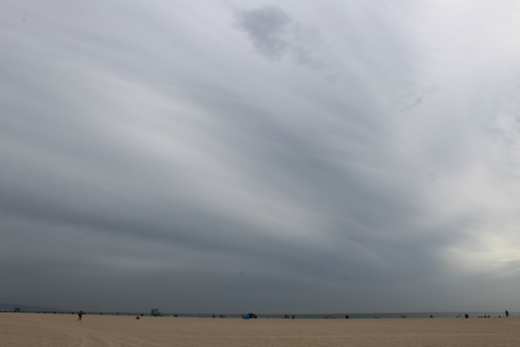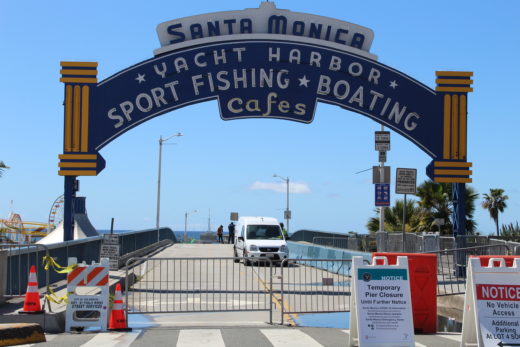Return back and continue south on Western, then left on Pico toward downtown.
Exploring from Koreatown to Pico Union, you will notice how the Korean signage turns to Spanish and the dominant cuisine becomes Latin American. This is because you are entering a neighborhood that, by the late 1900s, earned a reputation as home to the largest concentration of Central Americans (documented and undocumented) outside Central America. You will also notice the large concentration of cash-checking and money-wiring businesses that confirm how many of the low-income service workers here do not have bank accounts, but send their hard-earned wages back to their families in southern Mexico and Central America. Studies since the late 1900s have shown how this money sent from the U.S. (particularly from California) is the major source of income for many towns in these regions far to the south. You will also notice public health clinics and other signals: this is working class L.A., but it wasn’t always that way, and it may not be for much longer.
Stop # 6: Byzantine-Latino Quarter:
One city block from Pico to 15th between Normandie and Mariposa Avenues (Saint Sophia Greek Orthodox Cathedral (1324 S. Normandie Ave.), St. Thomas the Apostle Catholic Church (2727 W. Pico Blvd.), and Papa Cristo’s at 2771 Pico Blvd.):
Welcome to the fusion of Greek and Latino cultures known as the Byzantine-Latino Quarter.
Here is another L.A. landscape that defines diversity. This one reminds us how churches often serve as focal points of culture where the community can gather and organize. This is particularly true in Greek and Latino cultural traditions, where the church is often the epicenter of community, even for those who might not consider themselves religious. You will not be disappointed when you walk into these churches. More than beautiful landmarks, they are cornerstones in these communities with a lot of stories to tell.


The original St. Thomas the Apostle Catholic Church parish (at Pico and Mariposa) was built with Mission Revival or Spanish Renaissance style architecture and was completed in 1905. Today’s worshipers are mostly Latino.
Saint Sophia Greek Orthodox Cathedral is the anchor of Greek culture that was once centered here in the mid-1900s. Greek immigrants first established the parish in 1904, but this parish eventually moved here, building this church with its Byzantine architecture that was completed in the mid-1950s. You don’t have to be religious to admire the stunning interior decorations within this cathedral that took decades to complete. The education center was added by 2004. This is one of 20 Greek Orthodox churches in southern California. The annual Valley Greek Festival at St. Nicholas Greek Orthodox Church in Northridge attracts about 50,000 people to enjoy the food, entertainment, and celebration of culture there.



Across the street from the churches, you will find Papa Cristo’s (2771 Pico Blvd.). Established in 1948, it claims to have the best Greek food in L.A. and it certainly has earned its reputation. There you will find a store, restaurant, and bakery with Greek home-style cuisine; this is a traditional family-owned business that caters to customers that are now scattered around the L.A. area. According to U.S. Census surveys, about 150,000 Californians claimed Greek ancestry in recent years and about half of them live in southern California.






